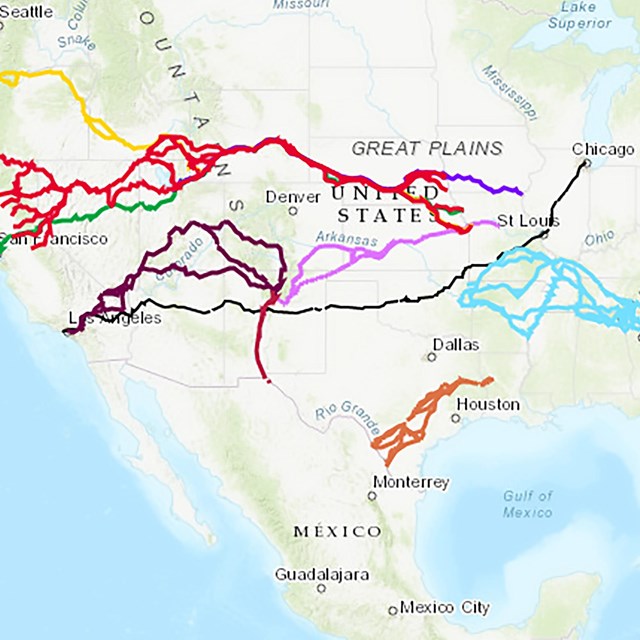Part of a series of articles titled Transportation During the Cherokee Removal 1837 - 1839.
Article
Flatboats: Transportation During the Cherokee Removal 1837 - 1839

Image/Courtesy of Library of Congress
Twenty-nine flatboats were used on the Hiwassee and Tennessee rivers to assist in the transportation of four Cherokee detachments to the West between 1837 and 1839. Flatboats were built commercially as early as the late 1780s and were one of the most common vernacular wooden boats used to transport people and cargo along the major southeastern rivers in the early 19th century. They were known by a variety of names, including arks, Kentucky boats, flats, New Orleans boats, broadhorns, family boats, and hooppole boats.
Flatboats were rectangular, flat-bottomed boats used for downstream travel that typically measured between 12 and 20 feet wide and from 20 to more than 100 feet in length. The stern and sides consisted of vertical walls of planks, and the bow was canted, or angled. Depending on the size of the boat, there were one or two long oars, called sweeps, on each side, a steering oar at the rear, and a “gouger” on the front of the flat. In addition, some flatboats had a mast and sail to help speed the slow-moving boats down river. In an effort to protect passengers and merchandise, cabins were often built on flats. These could be simple open-sided sheds or fully encased cabins that ran nearly the length of the boat. The cabins frequently had fireplaces built into them, as well, so that food could be prepared on board. Some, but not all, of the flatboats used in the Cherokee removal were lashed side-by-side to a steamboat and towed through some of the more dangerous rapids on the Tennessee River.
“There was, we understand, a flat bottom boat, 100 feet long, 20 feet wide, and two stories high, fastened to an old steam boat. This was so filled that the timbers began to crack and give way, and the boat itself was on the point of sinking. Some of the poor inmates were of course taken out, while this boat was lashed to the steam boat, and some other small boats were brought to take in those who had been recalled. Twelve hundred, it is said, were hurried off in this manner at one time.”
- Rev. Daniel S. Butrick, June 10, 1838, Ross’s Landing (Chattanooga, Tennessee)

Image/Courtesy of the Chattanooga Public Library.
“The Suck is the first and most difficult and dangerous of the rapids… The S[team] boat with one Flat on each side passed thro’ with most of the people on board, but after getting thro’ the most rapid water, it was found impossible to keep her in the channel, & in consequence was thrown upon the north Bank with some violence but luckily none of the people were injured although one of the Flats was a good deal smashed.”
- Lt. Edward Deas, June 6, 1838
The invention of the steamboat and railroads, along with vast improvements in the construction, design, and maintenance of roads and turnpikes, marked the beginning of a transportation revolution in the United States during the early 1800s. The Cherokee removal occurred as this revolution began to unfold. While the Cherokee utilized these transformative modes of transportation during their forced removal, it is important to remember that the majority traveled by foot on roads over rough terrain.
This publication was made possible by the Cooperative Ecosystem Studies Unit (CESU) Task Agreement P18AC01316 with National Trails– National Park Service and the Center for Historic Preservation at Middle Tennessee State University.
Read the Full Report
Last updated: December 21, 2021


